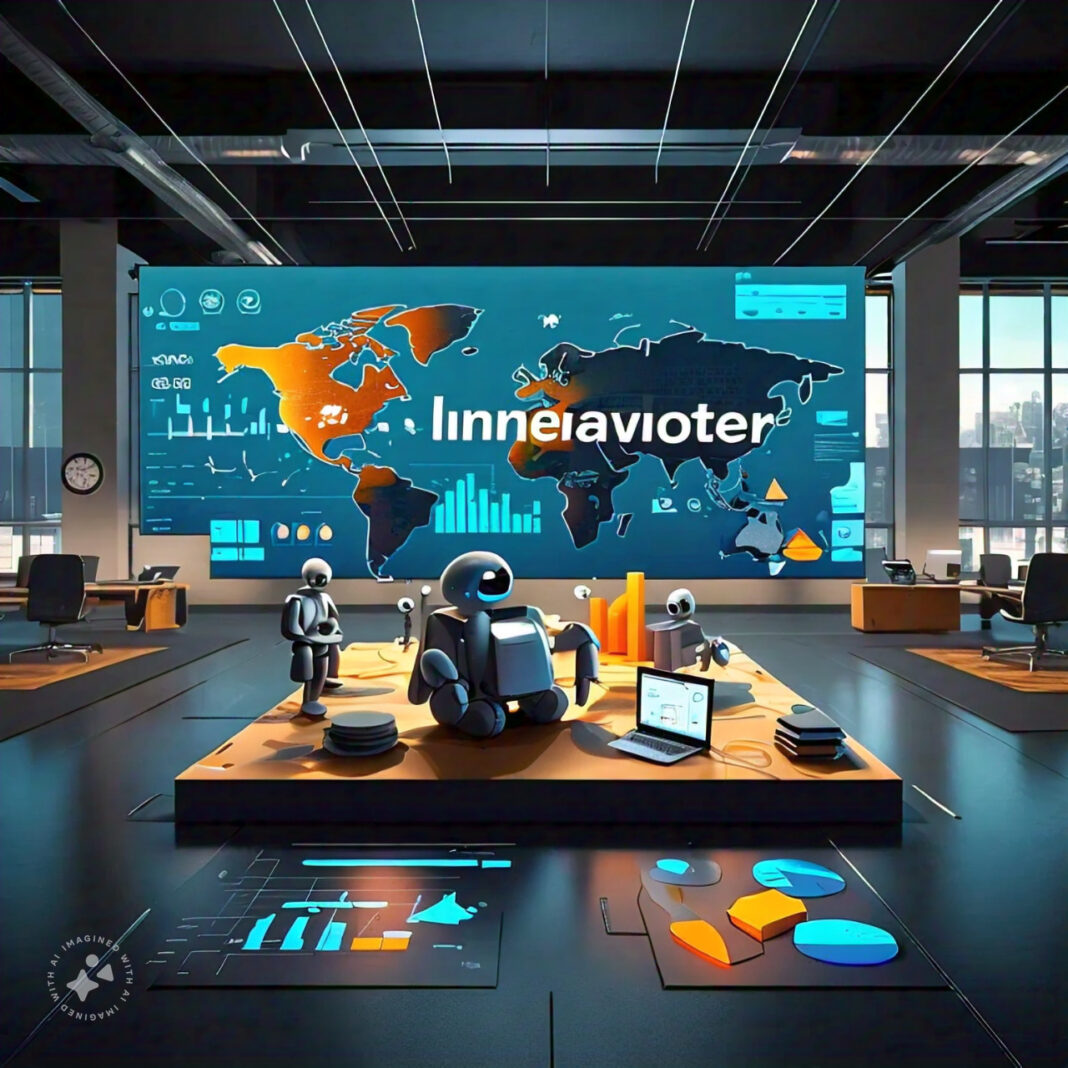Innovation has nowadays become more than a corporate buzzword – it’s the reason for the survival and competitiveness of companies in this speedy and ever-changing business environment. Business model innovation has, in particular, developed into one element that makes a difference in the long-term achievement of a company.
But why? The paper will attempt to discuss the various reasons why companies must embrace innovation in their business models and how it can foster growth, competitiveness, and sustainability.
The business model describes how an organization generates, delivers, and captures value. It comprises everything from the value proposition to be offered by a company and whom it is targeted towards, down to the revenue streams and the cost structure involved in running the business.
Business model innovation thus means changing one’s perspective regarding these elements, often challenging traditional industry norms and creating new markets or ways of conducting a business.
We will be able to explore how innovation’s role in business models has effects on different business operations and strategies. We shall also relate to real examples of companies that innovated their business models and the results achieved. By the end of the article, you will have a comprehensive understanding of why innovation is important for modern businesses and how it can be leveraged to drive success.
- Adapting to Changing Market Conditions
The primary reasons why innovation is crucial in business models are the requirements to adapt to fast-changing market conditions. Under the present-day global economy, changes can take place overnight and dramatically; sometimes, an industry might wake up one fine morning and find the world changed.

Technological Advancements:
New technologies may change older business models but enable newer ones. For example, e-commerce has changed retailing at its very roots. Brick-and-mortar shops are now forced to adapt or risk redundancy.
Shift of Consumer Preference:
With changing consumer tastes and behaviors, businesses have to innovate models to suit the new demand. For instance, there is a rising preference for sustainable and eco-friendly products, with most companies reviewing their production and supply chains in that direction.
Economic changes:
A downturn or upturn in the economy affects the business model of an organization. One that innovates during hard times comes out more robust as the economy bounces back.
By innovating their business models continuously, companies stay ahead of these changes and set themselves up to succeed under new market conditions.
- Gaining Competitive Advantage
Business model innovation can deliver a major competitive advantage and help companies differentiate in crowded markets.

Unique value propositions:
Innovative business models often open up value propositions that result in differentiation from rivals in the business environment. For example, Netflix redefined itself in business with its shift from DVD rentals to streaming, making a different value proposition that transformed the entertainment sector.
Cost advantages:
Some business model innovations bring down costs, enabling a company to offer more competitive pricing and thereby gain market share or improve profit margins. Aldi’s limited-assortment grocery store model is a great example of how a new way of retailing created enormous cost advantages.
Improved customer experience:
Innovations that improve customer experience increase loyalty and market share. Take, for instance, Amazon’s prime membership model, which comes with fast shipping and a host of other additional services that create a strong competitive advantage through better overall shopping experiences.
A culture of innovation would always look for new ways of value creation and hence would always be ahead of the competition.
- Market Expansion into New Territories
Business model innovation can unlock new markets and customer segments that were inaccessible or underserved earlier.
Geographical expansion: Innovative business models can bring down the barrier to entry into new geographical markets. For instance, Airbnb’s peer-to-peer lodging model has been able to make inroads into many international markets quite fast with very little capital expenditure in property investment.
Access to underserved customers:
Innovation can help companies serve previously overlooked or unprofitable markets. The case of the mobile money transfer business of M-Pesa in Kenya is one potential example of how an innovative business model could help serve unbanked populations and create new markets.
Creation of new industries:
Business model innovations can sometimes create entirely new industries. In the case of Uber, its ride-sharing business model has spawned the more general “gig economy” and many similar services across a wide range of sectors.
Businesses that think innovatively about their business models can find and execute new business opportunities that will help realize growth and diversification.
- Operational Efficiency
Business model innovation typically yields operational efficiency gains that could eventually materialize as a significant bottom-line effect.
Process reengineering: Innovative business models reengineer processes, reducing waste and improving productivity. Take the example of Toyota’s lean manufacturing system, adopted across industries, showing how a new approach to operations can be integral to major efficiencies.
Power of technology:
Many innovations in business models concern the strategic use of technology to gain efficiency. For instance, cloud computing has made it possible for many businesses to reduce IT costs and increase flexibility.
Optimizing resource allocation:
Such innovative business models may mean more efficient allocation of human capital, financial resources, or physical assets. The sharing economy model typified by organizations like Uber and Airbnb enables the use of idle resources.
If companies constantly look at innovating business models, then the most efficient ways of doing business would be tried out and adopted to enhance operational efficiency, leading to cost reduction and improved performance.
- Enhancing Customer Engagement and Loyalty:
Business model innovation leads to new ways of engaging customers and building brand loyalty.
Personalization: New business models, driven by innovative ways to tap into data and technology, offer personalized experiences. The Netflix recommendation algorithm, which comes after analyzing what users watched, is a very nice example of how personalization enhances customer engagement.
Subscription models:
Many have innovated into subscription-based models that enhance customer loyalty and result in more predictable revenue streams. Dollar Shave Club disrupted the razor industry with its subscription model for customer engagement in a new paradigm within the personal care sector.
Community building:
Some of these new business models are oriented toward developing a community around products or services. For example, Apple has created a committed community of users very engaged across its ecosystem of products and services.
Through innovations that increase customer engagement and loyalty, businesses establish deeper and more sustainable relationships with customers.
- Driving Sustainable Growth
Business model innovation can be the key driver of long-term, sustainable growth.

Diversification in revenue streams:
Innovative business models open up new revenue sources; thereby, reducing dependence on one product or market. Business model innovation, taking the example of Amazon, diversified from an online bookstore into a heterogeneous e-commerce platform, cloud services provider, and media company exemplified the very epitome of business model innovation driving diversification and growth.
Scalability:
Very often, innovative business models are scalable, and a company can enlarge its revenues enormously with little increase in costs. It is by this tenet of scalability that Software-as-a-Service companies like Salesforce have been able to display remarkable growth.
Resilience in market changes:
Innovative and resilient companies can normally absorb any changes in markets and other economic shifts by coming up with competitive models of business. In the case of Netflix, the change from DVD rentals to streaming demonstrated that business model innovation is capable of making a company survive amid technological changes and changes in consumer tastes and preferences, ensuring continuous growth.
Innovative business models will allow companies to get multiple pathways for growth, hence resilience against the volatility of markets.
- Attracting Investment and Talent
Such innovative business models can turn companies into magnets for both investors and top talent alike.
Charms for investors: The most frequent consequence of innovative business models is additional interest from investors who anticipate very high returns. This could well be underlined by looking at the stratospheric valuation levels of fast-growing tech startups with innovative models reach, such as Uber or Airbnb.
Charms for talent:
Innovative companies are usually considered to be more fun to work for, hence attracting the best brains. Google’s innovative methods in its work environment and benefits have set the company apart in desirability among employees from the technology sector.
Opportunities to be Partners:
Companies with innovative business models often find strategic collaboration easier to pursue since other firms desire to study or use these innovations themselves. For example, most traditional auto manufacturers have partnered with or invested in electric vehicle startups for access to new technologies and business models.
In cases where companies have a culture of innovation, they are better positioned as attractive prospects for financial and human capital.
- Responding to Regulatory Changes
Business model innovation can help a company both respond to and adapt to changes in its regulatory environment.
Innovation in compliance:
When regulations change, business model innovation may become necessary to comply with the change without sacrificing profit margins. Innovation in how financial services can be offered in compliance with complex regulations is one of the factors promoting the growth of fintech companies.
Turning challenge from regulation into opportunity:
Sometimes, it is even the case that regulatory change offers a chance for innovative business models. For example, a part of the renewable growth was a result of regulatory change that reduced carbon emissions and gave birth to innovative business models in solar and wind power.
Proactive adaptation:
Companies that have a culture of business model innovation are more likely to be better prepared to respond proactively to regulatory changes rather than reactively, and therefore maintain an edge in new regulatory landscapes.
Turning regulatory challenges into opportunities for growth and differentiation by embracing innovation can help companies in their growth journey.
- Creating a Culture of Continuous Improvement
Innovating in business models can foster a culture of continuous improvement within any organization.
Employee Empowerment:
If business model innovation is ranked first in a company, this makes employees feel more engaged and empowered. It starts from top to bottom, where people get motivated to generate new ideas and think creatively.
Learning organization:
Innovation at the forefront sets the stage for the so-called “learning organization—that is, one that continuously learns and adapts in the face of new information.” Evidence has shown that this can improve every aspect of the business.
Agile decision-making:
The more often companies innovate their business models, the more agile decision-making processes they often develop to respond still more quickly to new opportunities or challenges.
Fostering a culture of innovation will help create an organizational environment where improvement will become automatic. This again shall fuel continued success and adaptability.
Conclusion:
Innovation in business models is not only imperative; it is a precondition to the long-term success and sustainability of businesses today. This has elaborated on how business model innovation allows for adaptation to changing market conditions, competitive advantage, entry into new markets, operational efficiency, greater customer engagement, driving sustainable growth, attracting investment and talent, managing regulatory changes, and creating a culture of continuous improvement.
In today’s fast-moving world of business, if a company does not innovate its business models, it will be left at the back of the queue. The range of cases we have discussed—from the shift of Netflix to streaming to the disruption of the hospitality industry by Airbnb—demonstrate the transformational power that resides in the innovation of business models.
However, it should be noted that innovation is never a one-time activity. It’s a process that involves dedication, ingenuity, and probably in some cases the readiness to take a risk. Companies have to create a culture that encourages and rewards innovative thinking at all levels of the organization.
Successful innovation in business models more often than not requires a deep understanding of customer needs, market trends, and emerging technologies. It questions assumptions, challenges the status quo, and is willing to cannibalize existing business models in the pursuit of better ones.
The importance of business model innovation is likely to be higher in the future than ever before. Disruptions and opportunities created by rapid technological advancements, changes in consumer behavior, and rising global challenges like climate change will keep increasing. Hence, looking at the times ahead, firms that keep on innovating their business models to create new value in meaningful ways are the ones that thrive.
In other words, innovation in business models does not concern relevance; it is the art of shaping the future of industries and creating new paradigms for value generation. For firms who wish to thrive rather than struggle through the 21st century, embracing business model innovation, with a fierce focus on this area, shall not be merely important but imperative.






